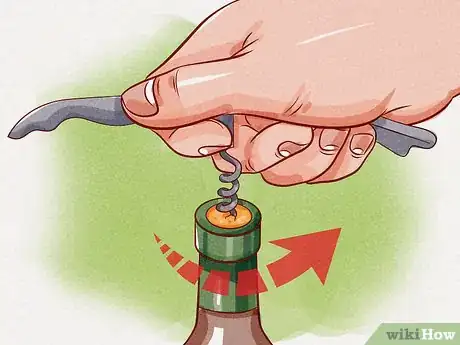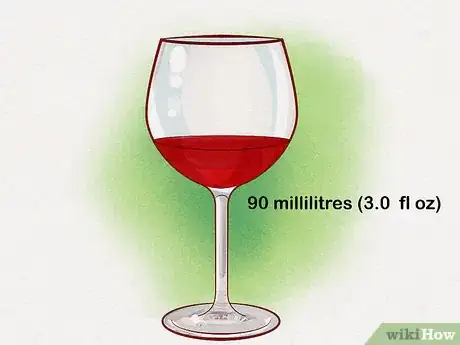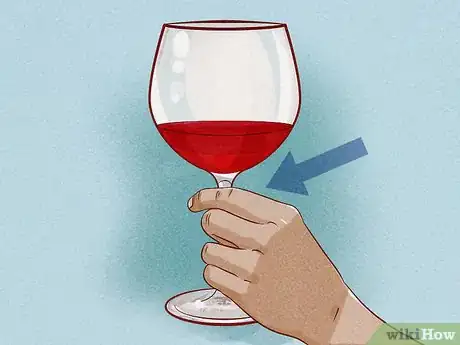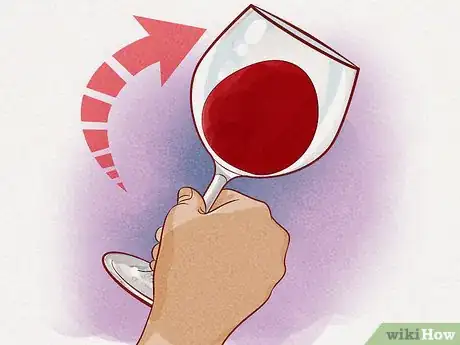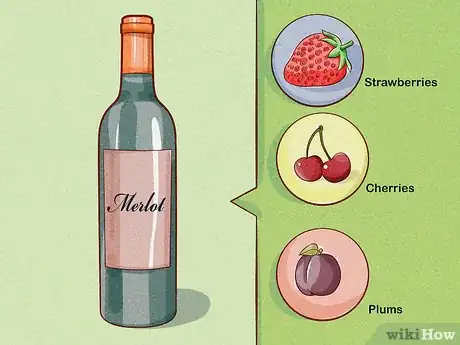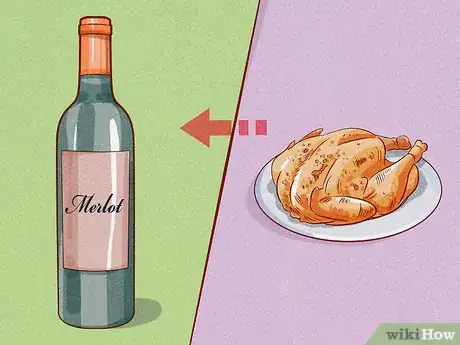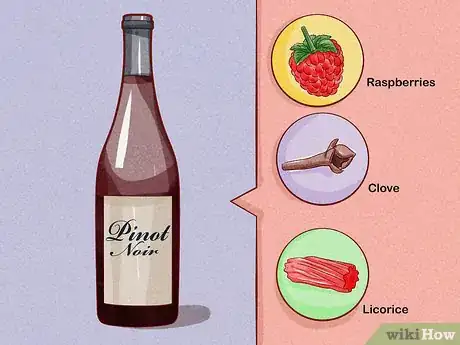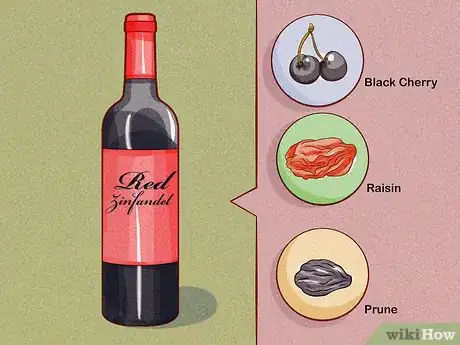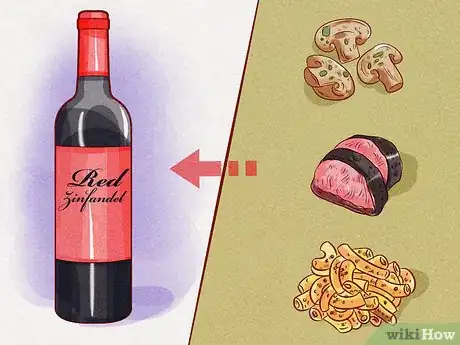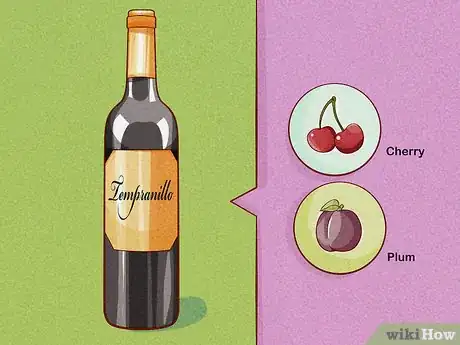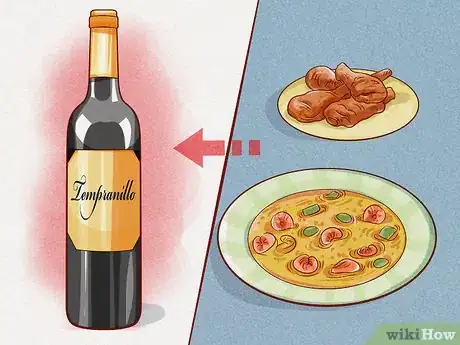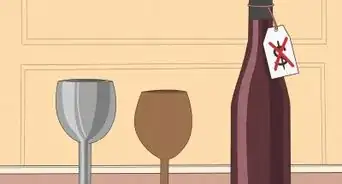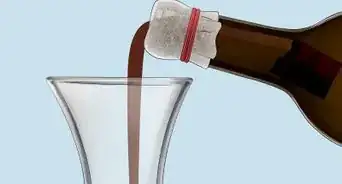This article was co-authored by Murphy Perng. Murphy Perng is a Wine Consultant and the Founder and Host of Matter of Wine, a business that produces educational wine events, including team-building experiences, networking events, and private parties. Based in Los Angeles, California, Murphy has served as a Wine Educator for clients such as Google, Buzzfeed, Tiktok, Snapchat, and Equinox and been featured on National Geographic and The Somm Journal. Murphy possesses her WSET (Wine & Spirit Education Trust) Level 3 Advanced Certification.
There are 19 references cited in this article, which can be found at the bottom of the page.
This article has been viewed 78,316 times.
Red wines are rich, complex, and can add a whole new dimension to your culinary experiences. Finding out which red wines you prefer can be a fun experiment as you sample what red wines have to offer. Once you know what kind of red wines you enjoy, pair them with complementing foods and share them with your friends. Then, if you really want to deepen your understanding of red wine, try traveling to a winery that offers red wine tastings! This article will walk you through how to serve and drink red wine, plus give you examples of different red wines to try.
Steps
Expert Q&A
-
QuestionHow long before drinking should I uncork my wine bottle?
 Murphy PerngMurphy Perng is a Wine Consultant and the Founder and Host of Matter of Wine, a business that produces educational wine events, including team-building experiences, networking events, and private parties. Based in Los Angeles, California, Murphy has served as a Wine Educator for clients such as Google, Buzzfeed, Tiktok, Snapchat, and Equinox and been featured on National Geographic and The Somm Journal. Murphy possesses her WSET (Wine & Spirit Education Trust) Level 3 Advanced Certification.
Murphy PerngMurphy Perng is a Wine Consultant and the Founder and Host of Matter of Wine, a business that produces educational wine events, including team-building experiences, networking events, and private parties. Based in Los Angeles, California, Murphy has served as a Wine Educator for clients such as Google, Buzzfeed, Tiktok, Snapchat, and Equinox and been featured on National Geographic and The Somm Journal. Murphy possesses her WSET (Wine & Spirit Education Trust) Level 3 Advanced Certification.
Certified Wine Consultant You should uncork your wine bottle 2 hours before drinking so that the wine can breathe and get all of the flavors out.
You should uncork your wine bottle 2 hours before drinking so that the wine can breathe and get all of the flavors out.
Warnings
- Do not drink and operate a car or other heavy machinery. If you plan on traveling to a wine tasting, make sure you have a designated driver or spit out the wine after you have tasted it.⧼thumbs_response⧽
References
- ↑ Murphy Perng. Certified Wine Consultant. Expert Interview. 15 March 2019.
- ↑ https://www.realsimple.com/food-recipes/shopping-storing/beverages/open-bottle-wine
- ↑ https://www.chicagotribune.com/ct-wine-aging-screw-caps-20150406-column.html
- ↑ Murphy Perng. Certified Wine Consultant. Expert Interview. 15 March 2019.
- ↑ https://www.foodandwine.com/articles/how-to-host-a-wine-tasting
- ↑ https://www.decanter.com/learn/advice/let-wine-breathe-ask-decanter-363531/
- ↑ https://winefolly.com/tutorial/the-importance-of-a-proper-wine-glass/
- ↑ https://winefolly.com/tutorial/host-wine-tasting-party/
- ↑ Murphy Perng. Certified Wine Consultant. Expert Interview. 15 March 2019.
- ↑ https://winefolly.com/tips/hold-wine-glass-civilized/
- ↑ https://www.winemag.com/2015/08/25/how-to-taste-wine/
- ↑ https://www.foodandwine.com/articles/how-to-host-a-wine-tasting
- ↑ https://www.foodandwine.com/articles/how-to-host-a-wine-tasting
- ↑ https://www.winemag.com/2015/10/27/red-wine-basics/
- ↑ https://www.bbcgoodfood.com/howto/guide/match-red-wine-food
- ↑ Murphy Perng. Certified Wine Consultant. Expert Interview. 15 March 2019.
- ↑ http://www.gayot.com/wine/pairing/red-wines.html
- ↑ https://www.kj.com/blog/red-wine-types-and-more-the-basics-of-red-wines
- ↑ https://www.foodandwine.com/slideshows/15-rules-for-great-wine-and-food-pairings#1
- ↑ https://www.bbcgoodfood.com/howto/guide/match-red-wine-food
- ↑ https://www.winemag.com/2015/10/27/red-wine-basics/
- ↑ https://www.i-winereview.com/FoodWinePairingAdventures/1702Zinfandel.php
- ↑ https://www.kj.com/blog/red-wine-types-and-more-the-basics-of-red-wines
- ↑ Murphy Perng. Certified Wine Consultant. Expert Interview. 15 March 2019.
- ↑ https://www.winery-sage.com/blog/general/how-to-pair-tempranillo-wine-with-food/
- ↑ https://winefolly.com/tutorial/6-foods-dont-pair-wine/
- ↑ https://www.firstpourwine.com/wine-101/wine-tasting-order/
- ↑ https://www.foodandwine.com/articles/how-to-host-a-wine-tasting
- ↑ https://winefolly.com/deep-dive/write-excellent-wine-tasting-notes/
- ↑ https://www.decanter.com/learn/advice/let-wine-breathe-ask-decanter-363531/
About This Article
When drinking red wine, there are a few things you should remember to get the most out of your wine. Serve it at room temperature to preserve its natural flavor. There are a few exceptions, such as dessert wines or concord blends, some of which are best served chilled. Fill a quarter to a third of your glass so there’s space for you to swill the wine and smell it. Sip the wine slowly and swish it around your mouth to coat your entire palate. You can also inhale a little air between your teeth to enhance the flavor. If you’re eating red meat with your wine, choose a Cabernet Sauvignon. Serve poultry and lighter meats with a Merlot. For more tips from our Wine co-author, including how to cleanse your palate between different wines, read on!

